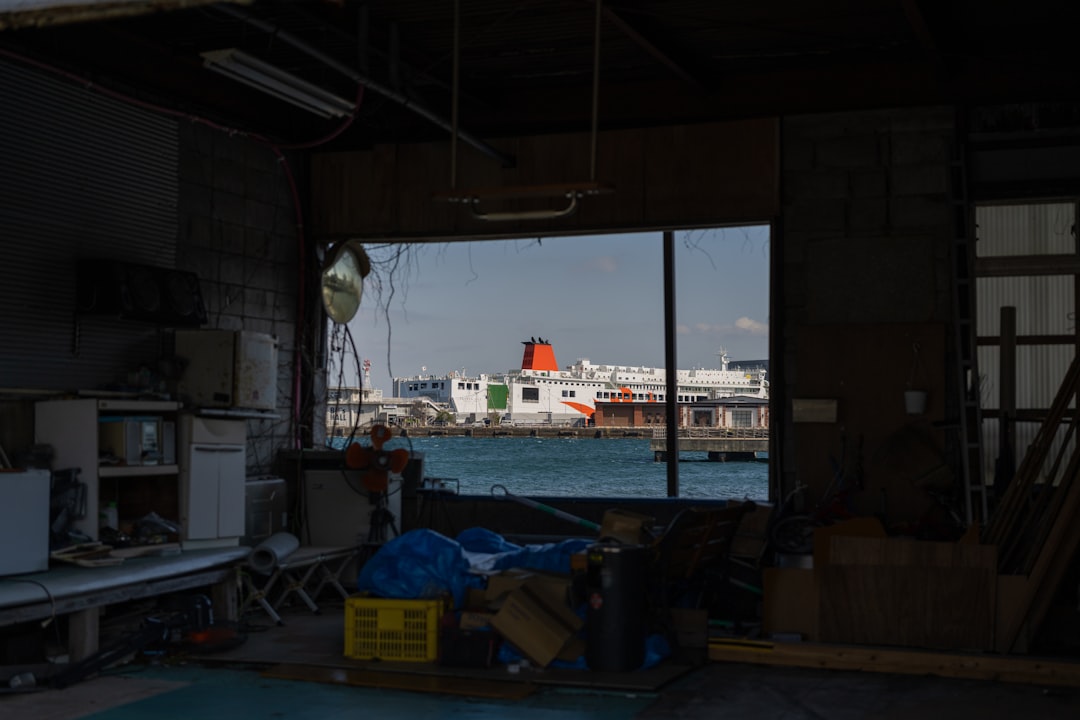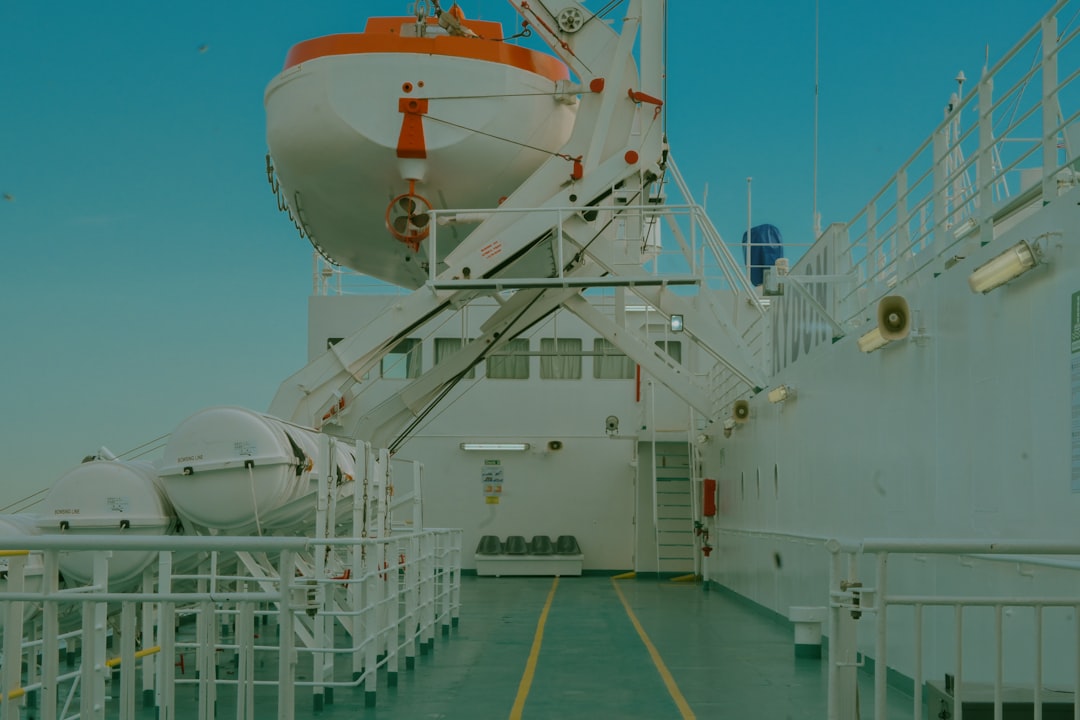

Engage prospects with a scan and streamline customer engagement with FREE QR code marketing tools by Sona – no strings attached!
Create a Free QR CodeFree consultation

No commitment

Engage prospects with a scan and streamline customer engagement with FREE QR code marketing tools by Sona – no strings attached!
Create a Free QR CodeFree consultation

No commitment
The demand for ship cleaning services is rising as the maritime industry evolves to meet increasing health, safety, and environmental standards. In such a competitive and regulated environment, standing out requires not only providing exceptional marine cleaning and vessel maintenance but also making access and communication easier for decision-makers, ship owners, and port managers who rely on fast, accurate information.
Whether it is ensuring compliance with international sanitation protocols or delivering premium boat detailing services, ship cleaning operators seek new ways to streamline customer interactions and improve efficiencies. Traditional engagement methods, such as manually distributed brochures or booking forms, can frustrate time-sensitive stakeholders and result in missed opportunities when prospects do not formally request information.
A recurring challenge is that high-value leads, such as fleet managers or ship agents, may engage with a service passively or anonymously, never entering the CRM or surfacing on sales' radar. This lack of visibility often leads to missed opportunities for follow-up, upsell, or personalized service.

Creating a frictionless experience for crews, inspectors, and ship owners remains a central obstacle for marine cleaning services. Too often, critical documentation or booking options are locked behind inconvenient paperwork or static signage, increasing response times and losing genuine leads. QR codes, placed at key physical touchpoints, offer a modern solution.
Here is how forward-thinking ship cleaning businesses are using QR codes in daily operations and customer engagement. The goal is to replace analog, high-friction steps with fast digital actions that work in port, on the dock, or onboard.
Modern QR platforms can personalize content by vessel or port and track each scan for later lead nurturing. Platforms like Sona QR ensure that previously anonymous engagement is recorded and actionable for follow-up, improving your chances to capture, qualify, and convert on-the-spot interest.

Ship cleaning providers face persistent roadblocks: mobile clients dispersed across ports, hard-to-reach crews, strict audit requirements, and fragmented data on who is actually engaging. Many potential leads read a placard or see a vehicle decal, yet never submit a form, leaving high-intent prospects invisible. QR codes close these gaps when deployed with intent.
Their value shows up in both speed and insight. Scans take seconds, yet they deliver structured data you can analyze. For a business that runs on tight windows and precise compliance, this combination can be transformative.
A real-world example illustrates the point. After embedding QR codes on job completion tags, one marine cleaning company saw a jump in post-cleaning feedback and photo uploads. Busy crews found it effortless to scan and submit forms. The company gained reliable account-level insights that improved quality assurance and revealed upsell opportunities tied to specific vessels and routes.
Ship cleaning organizations often operate with incomplete or outdated vessel and stakeholder data. QR codes are flexible, so you can select formats that best address the data and access gaps you face across ports, yards, and onboard environments.
For marine cleaning work, several formats stand out because they simplify access and reduce friction under time pressure. Choose what maps to each touchpoint and action you want to trigger.
Dynamic QR codes are usually preferred for marine use because links and content often need to change by port, vessel, audit cycle, or season. With dynamic codes, you retain the same printed assets but keep all destinations and tracking current, which is essential for personalization, analytics, and compliance updates.

Growth emerges where high-intent audiences naturally interact with your brand or your work. In ship cleaning, many of those moments still live in the physical world: at the gangway, in the engine room, on service trucks, and inside completion documents. QR codes turn those physical moments into measurable, digital engagement.
Start by auditing your customer journey in port and onboard. Identify any place where a prospect might wonder how to book, confirm compliance, or get pricing. Then insert a clear, benefit-driven QR prompt that removes guesswork and eliminates the friction of manual outreach.
Tie every scan to an account record or at least a vessel and port. When each interaction is attached to a profile, you can follow up contextually and build a more accurate picture of needs across fleets and routes.

Marine cleaning teams juggle complex schedules, rigorous standards, and diverse stakeholders. The right QR deployments can clean up documentation gaps, accelerate booking, and improve training at the exact point of use.
Focus on use cases that transform common pinch points into fast, trackable digital flows. This produces measurable gains in speed, compliance, and conversion quality.
Each use case can be integrated with dynamic content and analytics. A single code on a locker can route to different landing pages based on language or port and can tag the scan with metadata that enriches your CRM for smarter follow-up.
Every QR scan is a signal. It reveals intent, context, and often the role of the person scanning. By deploying multiple codes across touchpoints, you can segment your audience automatically and use those segments to fuel high-precision retargeting across email, SMS, and ads. See Sona’s intent-driven retargeting playbook.
In ship cleaning, audience distinctions often map to vessel role and buying stage. A crew member scanning a training label is not the same as a port engineer scanning an invoice, and neither is the same as a ship agent scanning a dockside quote prompt.
With a centralized platform like Sona QR, each code becomes a smart entry point that captures context, converts interest, and automatically organizes audiences for next-touch personalization.
Many marine cleaning providers struggle with disconnected marketing efforts. Print materials exist separately from digital campaigns, which makes performance measurement and attribution difficult. QR codes connect those worlds so you can coordinate messages, gather data, and optimize spend in real time.
By embedding QR codes into the channels you already use, you convert every impression into a potential action. The result is better continuity from dock signage to website visit to booked job, all tracked in a single system.
When all codes are managed in a platform like Sona QR, you can standardize design, ensure consistent calls to action, and stream analytics into dashboards that guide channel mix and creative decisions.
Successful QR deployment in ship cleaning requires more than printing a code and hoping for scans. It demands clarity of purpose, thoughtful design for maritime conditions, multi-site coordination, and disciplined measurement that loops back into optimization.
Use the following steps as a repeatable playbook. Start small with a single high-impact use case, then expand across vessels, ports, and teams as you gather data and refine placement, messaging, and workflows.
Select a focused goal that maps to a real bottleneck. Examples include accelerating quote requests at dockside, delivering SDS documents at the point of use, or capturing post-service feedback from crew before a vessel departs via Google Forms QR.
Decide between static and dynamic codes. Static codes point to fixed destinations and are fine for simple, unchanging content. Dynamic codes are editable and trackable, which is usually ideal for campaign use.
Design with field conditions in mind. Maritime environments include glare on glossy surfaces, salt spray, humidity, vibration, and uneven lighting. Codes must remain scannable under these realities.
Roll out codes where they will be seen and used. Balance customer-facing placements with operational nodes so you capture both buying intent and service data that improves delivery.
Build a routine for reviewing performance and making improvements. Optimization is where QR campaigns compound value.
With a measured rollout, you can demonstrate early wins that justify broader adoption. Over time, your QR program becomes a reliable source of demand capture, training engagement, and compliance clarity.

One hidden loss for ship cleaning providers is the inability to connect physical marketing or documentation spends with actual revenue and service adoption. QR analytics change that by making offline interactions measurable, then tying those inputs to pipeline, bookings, and renewals.
The key is to collect structured data at the moment of scan, synchronize it with your CRM, and follow the thread through to outcomes. With this loop in place, you can finally see which docks, vessels, and materials drive real business.
Sona QR captures real-world engagement in structured form. Sona.com correlates that engagement with your broader digital signals and CRM activity. Together they provide a closed loop that links a scan in the field to measurable revenue outcomes.
QR campaigns work best when they are woven into existing workflows and when their value is obvious to both staff and clients. Treat them as a living part of your service experience rather than a one-time tactic.
Focus on practical steps that increase scan rates, improve attribution, and trigger timely actions. A few well-placed, high-performing codes can outperform many scattered deployments that lack clear purpose.
Start creating QR codes for free with Sona QR. Sign up, create dynamic codes tied to your top use cases, and watch how quickly offline interactions become digital signals you can act on.
QR codes have matured from convenience features into strategic levers for high-performing ship cleaning providers. By turning every placard, invoice, and equipment label into a digital onramp, your business gains real-time visibility into account activity, can re-engage both known and previously anonymous prospects, and serves clients with faster, more accurate information. This approach directly addresses industry pain points: lost leads at the dock, outdated account data, and missed upsell moments that erode margins.
The payoff compounds as you standardize and scale. Dynamic codes keep content current without reprints. Analytics reveal which ports and assets generate value. Automated workflows ensure that high-intent scans trigger immediate follow-up. Integrated platforms like Sona QR and Sona.com close the loop from scan to revenue, connecting physical efforts to digital outcomes and budget decisions.
QR codes usher in a new era of efficiency, measurement, and accessible service for ship cleaning. When thoughtfully woven into every stage of the customer and crew experience, they improve compliance readiness, accelerate conversions, and raise retention. Start by instrumenting one or two high-impact touchpoints, prove the impact with clear metrics, then expand across your fleet of materials and locations. In a fast-evolving, compliance-driven marketplace, this is how ship cleaning services capture growth and earn trust one scan at a time.
QR codes have revolutionized the ship cleaning services industry by transforming routine maintenance interactions into dynamic, measurable engagement opportunities. Whether it’s streamlining service scheduling, enhancing client communication, or providing instant access to cleaning protocols and certifications, QR codes replace cumbersome manual processes with quick, mobile-friendly actions that improve operational efficiency and customer satisfaction. Imagine your clients effortlessly accessing service details and feedback forms right from their smartphones, accelerating trust and repeat business.
With Sona QR, you can create dynamic, trackable QR codes in seconds, update service information instantly without reprinting, and connect every scan to actionable insights that optimize your service delivery and client retention. No missed follow-ups, no lost data—just smarter, more effective ship cleaning operations. Start for free with Sona QR today and transform every scan into a stronger client relationship and a cleaner, more efficient fleet.
Professional ship cleaning services ensure compliance with health, safety, and environmental standards while providing exceptional marine cleaning and vessel maintenance that improve operational efficiency and customer satisfaction.
Choose a ship cleaning service that offers streamlined communication, fast and accurate information access, compliance with international sanitation protocols, and uses modern tools like QR codes to improve service efficiency and transparency.
Ship cleaning services include premium boat detailing, sanitation checks, waste management pickups, preventive maintenance, incident reporting, and specialized cleaning such as engine room deep cleaning and interior detailing.
Ensure safety and efficiency by using services that provide real-time access to updated safety guides, chemical data sheets, multilingual instructions, and that implement digital workflows with QR codes for instant booking, documentation access, and compliance verification.
Costs vary based on service type and scope, but using QR code-enabled digital workflows can reduce expenses by minimizing print waste, data entry errors, and improving lead capture and conversion rates, resulting in a strong return on investment.
QR codes create frictionless access to booking, documentation, safety references, and real-time quotes, increase lead visibility, speed up workflows, keep content current, and provide valuable analytics for follow-up and service optimization.
QR codes should be placed onboard vessels, on port and dock signage, fleet vehicles, supply labels, service invoices, completion reports, yard office displays, and trade show materials to capture high-intent engagement at key touchpoints.
Common QR code formats include web links for bookings and documentation, vCards for contact sharing, SMS or email for urgent requests, Wi-Fi access codes, and app download links, with dynamic QR codes preferred for flexibility and analytics.
They can use platforms like Sona QR to capture scan data including time, location, and device, synchronize with CRM systems, analyze engagement and conversion rates, and attribute revenue and renewals to specific QR code interactions.
Steps include selecting a focused use case, choosing the appropriate QR code type, designing and testing codes for maritime conditions, deploying across strategic channels, and continuously tracking and optimizing performance.
Use Sona QR's trackable codes to improve customer acquisition and engagement today.
Create Your FREE Trackable QR Code in SecondsJoin results-focused teams combining Sona Platform automation with advanced Google Ads strategies to scale lead generation

Connect your existing CRM

Free Account Enrichment

No setup fees
No commitment required

Free consultation

Get a custom Google Ads roadmap for your business






Launch campaigns that generate qualified leads in 30 days or less.
